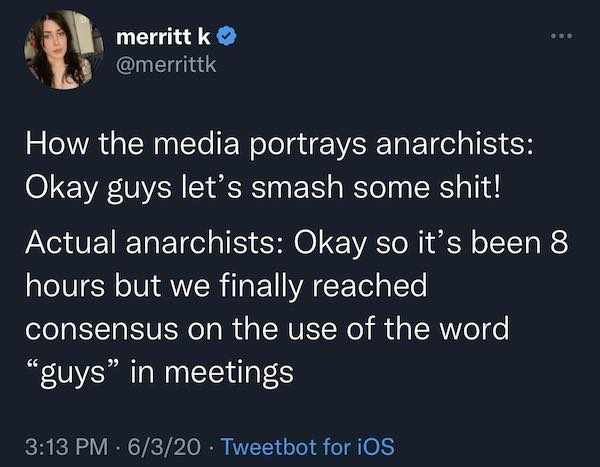
Category: Stranger than Fiction
The truth about anarchists


Yes, it’s another one of my regular reminders to double-check your work (or better yet, have someone else double-check it) before putting it out into the world.
There’s a famous six-word story attributed to Ernest Hemingway that goes as follows:
For sale: baby shoes, never worn.
The six-word story told by the two signs above has a little more dark humor.

(Need context? Dick’s best-known novel is Do Androids Dream of Electric Sheep?, published in 1968 and made popular by the film based on it: 1982’s Blade Runner.)

There are still a lot of prudes here in the Excited States, as evidenced by these headlines, listed in order of increasing inanity:
- AL.com: Florida reporter protects mic with condom during Hurricane Ian broadcast
- Yahoo! News: Florida Reporter Wraps Mic In Condom: ‘Safe Hurricane Reporting’
- New York Post: Florida reporter defends putting condom on mic during Hurricane Ian broadcast
- TMZ: Here’s a Tip … REAL REPORTERS USE CONDOMS!!!
The reporter in question is Kyla Galer, a reporter from Fort Myers’ WBBH News, who used an old sound engineering trick to protect her microphone when reporting on Hurricane Ian’s progress.
A good microphone can be an expensive investment, and being electrical devices, they can be damaged by moisture. Many audio and video techs use condoms — the unlubricated kind, of course — to cover microphones, and wireless microphone transmitter packs to protect them from moisture at outdoor gigs, or even from sweaty musicians.

They’re much cheaper when you buy them loose and in bulk, which America’s Condom Superstore will gladly sell to you — a mere $15 will get you 50 of these condoms. Perfect if you’re using them to protect sound equipment, or just a cheap fucker.

